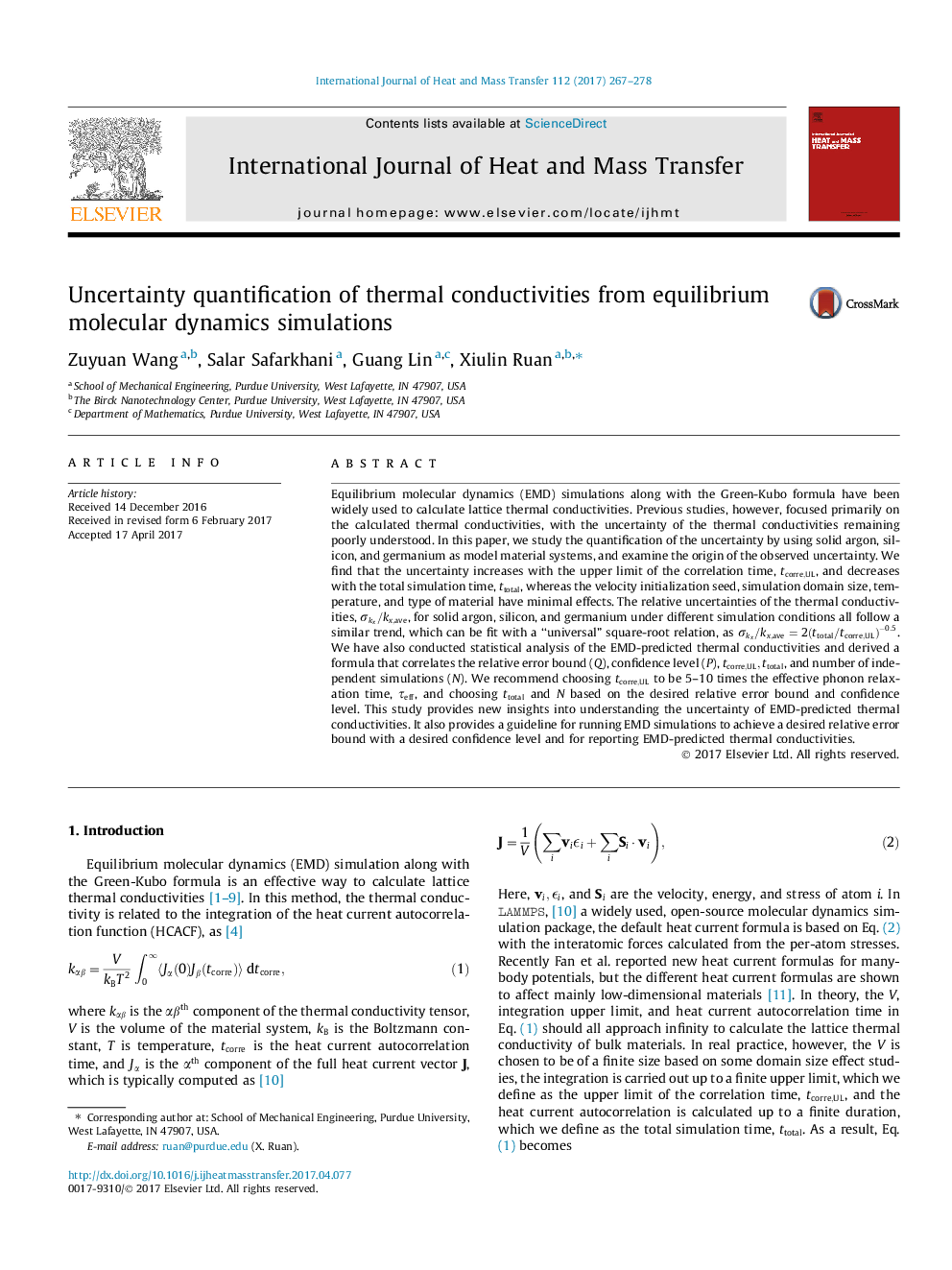| Article ID | Journal | Published Year | Pages | File Type |
|---|---|---|---|---|
| 4993657 | International Journal of Heat and Mass Transfer | 2017 | 12 Pages |
Abstract
Equilibrium molecular dynamics (EMD) simulations along with the Green-Kubo formula have been widely used to calculate lattice thermal conductivities. Previous studies, however, focused primarily on the calculated thermal conductivities, with the uncertainty of the thermal conductivities remaining poorly understood. In this paper, we study the quantification of the uncertainty by using solid argon, silicon, and germanium as model material systems, and examine the origin of the observed uncertainty. We find that the uncertainty increases with the upper limit of the correlation time, tcorre,UL, and decreases with the total simulation time, ttotal, whereas the velocity initialization seed, simulation domain size, temperature, and type of material have minimal effects. The relative uncertainties of the thermal conductivities, Ïkx/kx,ave, for solid argon, silicon, and germanium under different simulation conditions all follow a similar trend, which can be fit with a “universal” square-root relation, as Ïkx/kx,ave=2(ttotal/tcorre,UL)-0.5. We have also conducted statistical analysis of the EMD-predicted thermal conductivities and derived a formula that correlates the relative error bound (Q), confidence level (P), tcorre,UL,ttotal, and number of independent simulations (N). We recommend choosing tcorre,UL to be 5-10 times the effective phonon relaxation time, Ïeff, and choosing ttotal and N based on the desired relative error bound and confidence level. This study provides new insights into understanding the uncertainty of EMD-predicted thermal conductivities. It also provides a guideline for running EMD simulations to achieve a desired relative error bound with a desired confidence level and for reporting EMD-predicted thermal conductivities.
Related Topics
Physical Sciences and Engineering
Chemical Engineering
Fluid Flow and Transfer Processes
Authors
Zuyuan Wang, Salar Safarkhani, Guang Lin, Xiulin Ruan,
